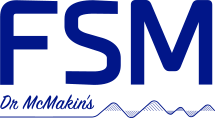How Frequency Specific Microcurrent Works
Understanding the Technology
Frequency Specific Microcurrent (FSM) uses extremely low levels of electrical current—measured in millionths of an ampere (microamps)—combined with specific frequencies to support the body’s natural healing processes. This current is approximately 1,000 times less than traditional TENS units and is below the level of sensation.
The Science of Microcurrent
Research has shown that microcurrent in the range of 10-500 microamps can:
- Increase ATP (cellular energy) production by up to 500%
- Enhance protein synthesis by 70%
- Improve amino acid transport by 40%
- Support cellular communication and tissue repair
These effects provide cells with the energy and resources needed for optimal function and healing.
The Role of Frequencies
FSM uses two channels simultaneously:
- Channel A delivers frequencies associated with various tissue conditions
- Channel B delivers frequencies associated with specific tissue types
Practitioners select frequency combinations based on their assessment and clinical experience. The frequencies are delivered through a ramped square wave that carries the current to the tissues.
The Principle of Resonance
Every tissue in the body has natural bioelectrical properties. FSM practitioners work with the understanding that tissues may respond to specific frequency combinations through a principle similar to resonance—where matching frequencies can influence tissue behavior.
Think of it like two tuning forks: when one vibrates at a specific frequency, another tuned to the same frequency will begin to vibrate in response. While the exact mechanisms are still being researched, clinical observations suggest that specific frequency combinations may support positive changes in tissue function.
The FSM Philosophy: Treating the Cause, Not Just Symptoms
A fundamental principle of FSM is that it always works when the treatment matches the actual cause of the problem. This is why proper assessment is crucial to FSM success.
Beyond the Diagnosis
FSM practitioners are trained to look beyond diagnostic labels to understand what’s actually happening in the tissues. For example:
- “Shoulder pain” isn’t a diagnosis—it’s a symptom that could stem from nerve irritation, joint inflammation, muscle adhesions, or even referred pain from the liver
- “Plantar fasciitis” in someone who doesn’t walk much might actually be nerve pain from the spinal cord
- Chronic headaches might originate from cervical facet joints, not muscle tension
The Detective Work
FSM practitioners emphasize that 85% of the diagnosis comes from the patient’s history. They pay careful attention to:
- Mechanism of onset – The exact way an injury or condition began
- Symptom patterns – What makes symptoms better or worse
- Physical examination – Including sensation, reflexes, and provocation tests
- The underlying cause – Not just what hurts, but why it hurts
Frequency as Diagnosis
The specificity of FSM frequencies provides another diagnostic tool. If frequencies for nerve inflammation resolve the pain but frequencies for muscle inflammation don’t, this tells the practitioner that the nerve—not the muscle—is the primary problem. As FSM practitioners say: “The frequencies either WORK or DON’T WORK,” and when they work, they confirm what tissue and condition are actually involved.
Supporting Lasting Change
FSM recognizes that lasting results require addressing not just the immediate problem but also the factors that maintain it. This includes:
- Treating compensatory patterns that develop around injuries
- Addressing the nervous system’s role in maintaining pain patterns
- Supporting the “stable state” with appropriate nutrition, hydration, and movement
- Removing interference patterns that prevent normal healing
Clinical Applications
FSM is used by licensed healthcare practitioners within their scope of practice. The technology has been utilized for over 25 years by thousands of practitioners worldwide. Common applications include supporting recovery from injuries, managing discomfort, and promoting tissue health.
The Treatment Approach
FSM practitioners follow a systematic approach:
- Identify the tissue causing the pain or dysfunction
- Determine what’s wrong with that tissue
- Address the root cause of the problem
- Support the nervous system involved in the condition
- Create conditions for lasting change
This approach means that two patients with the same diagnosis might receive completely different FSM protocols based on their individual history and examination findings.
Safety and Regulation
FSM devices are FDA-cleared in the category of TENS devices for pain management. The frequencies and their applications represent the clinical experience of practitioners using this technology. As with any therapeutic approach, results vary by individual and condition.
Important Disclaimers
- FSM does not claim to diagnose, cure, treat, or prevent any disease or medical condition
- The use of specific frequencies as a therapeutic tool has not been evaluated by the FDA
- FSM should only be used by licensed healthcare practitioners trained in its application
- FSM is contraindicated during pregnancy and in patients with demand pacemakers
- Individual results may vary
Professional Training
FSM requires specialized training to use effectively. Healthcare practitioners interested in incorporating FSM into their practice should complete certified training programs that cover proper assessment, frequency selection, and application techniques. The training emphasizes critical thinking, careful observation, and the importance of treating causes rather than chasing symptoms.
This information is provided for educational purposes only. Always consult with a qualified healthcare practitioner for advice regarding your specific health concerns.
